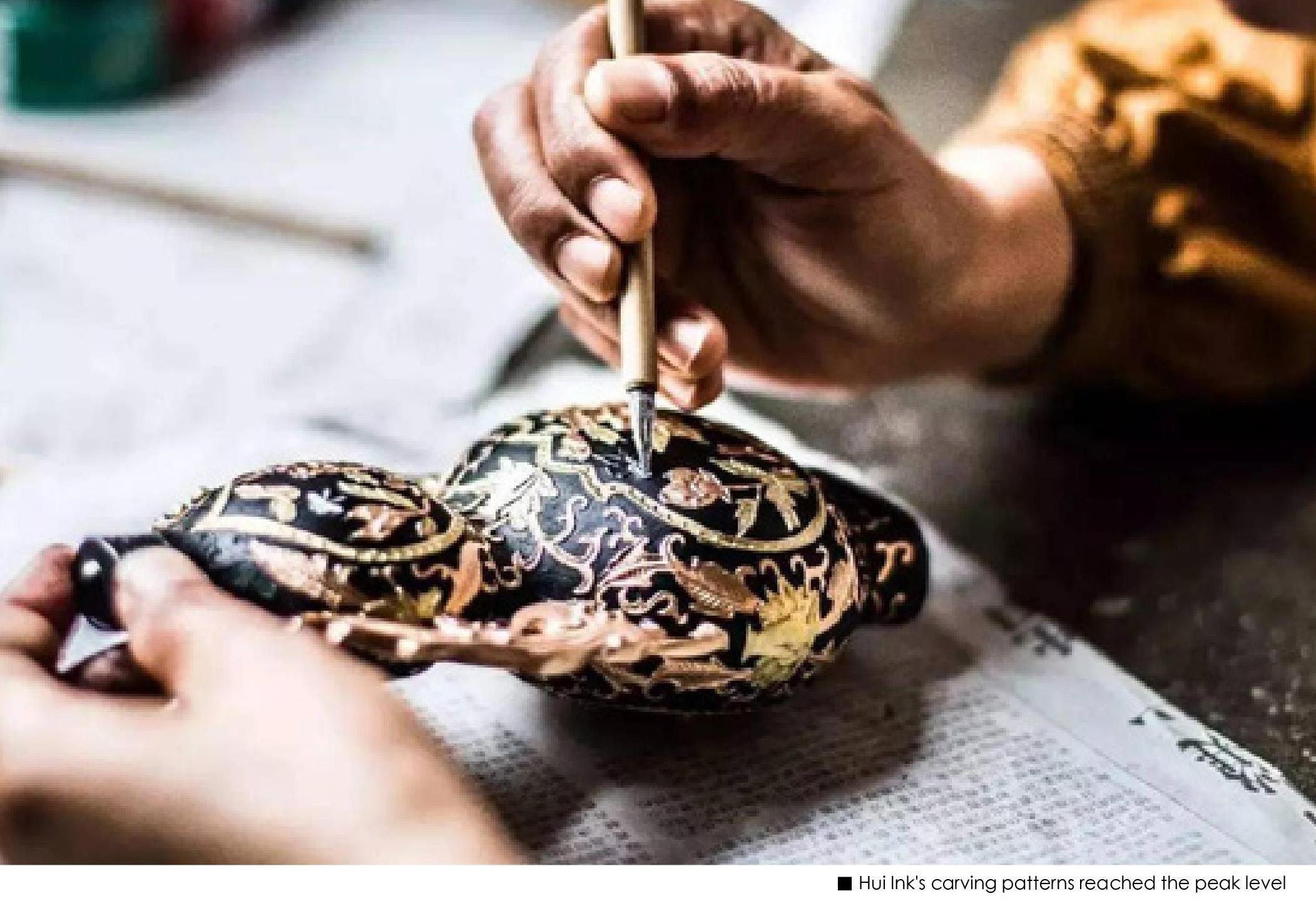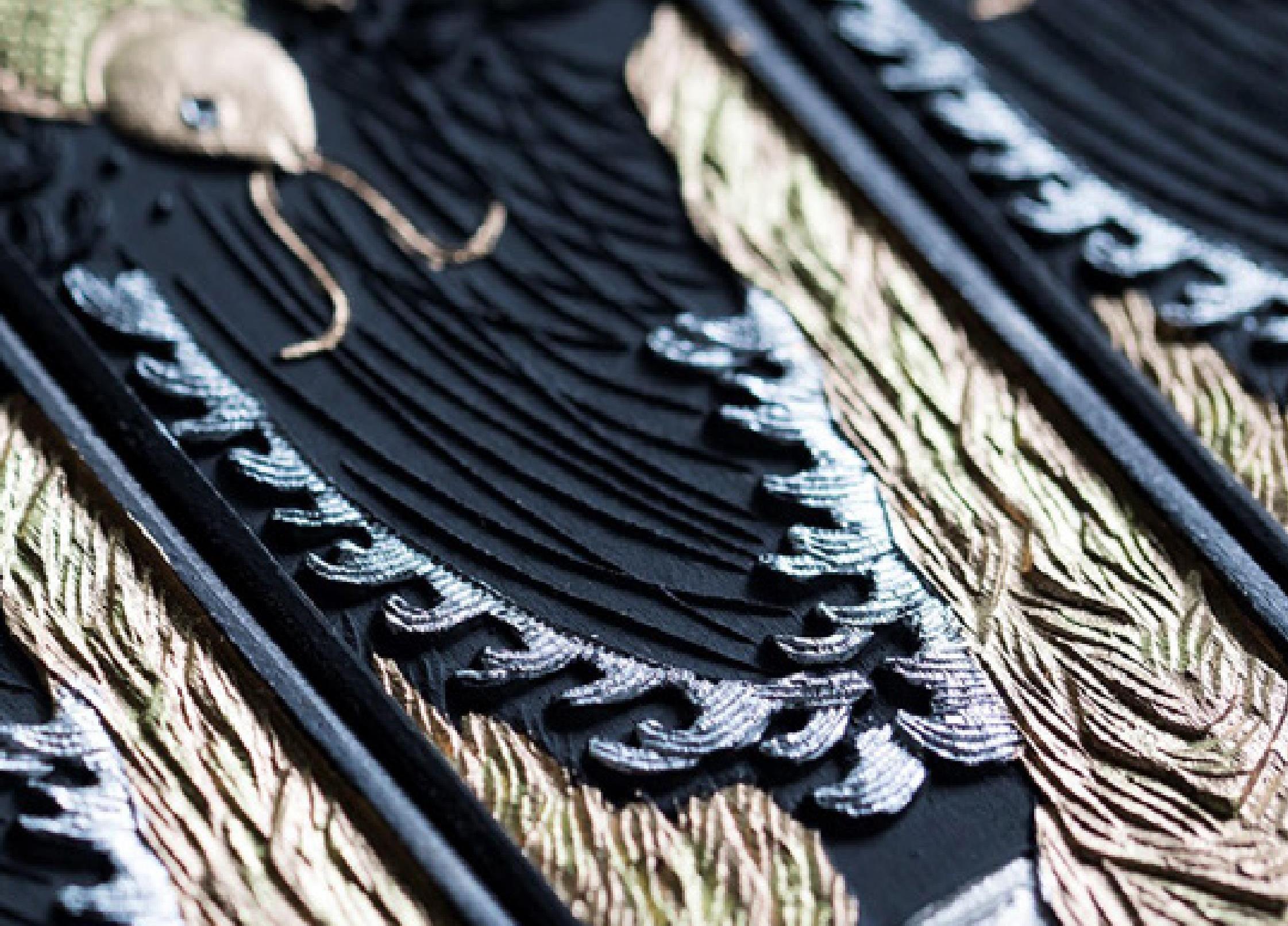Hui Ink:Unique Pigment of Chinese Painting and Calligraphy
Mo Tingting



What kept Chinese culture flowing for thousands of years? Now the ball-point pen has been extensively used for convenience sake, but traditionally all writing either official or simple correspondence is done with ink and a writing brush, which is the Chinese style paintbrush. A genuine Chinese ink wash painting is never done with any other colors, but only the natural shades of the ink. High-quality Hui Ink is essential for the preservation of Chinese painting and calligraphy. Nowadays, generations of Huizhou people have been pursuing dreams away from their hometown at a very young age, however, someone chose to stay home and inherit the production techniques of Hui Ink.
Keeping Chinese traditional culture alive
The “Four Treasures of the Study” in China (writing brush, ink stick, paper and ink stone) are traditionally used for daily writing and painting purposes. Where there is brush, there is ink. In a dramatic scene about people's life in ancient China, it is common to see that a black stick is ground against an ink stone with a little water, producing ink for painting and calligraphy. As one of the most important items in Chinese traditional culture, the ink stick is the solid form of ink, and is easier to carry. Without these small ink sticks, Chinese culture wouldnt be what it is.
Huizhou, Anhui Province, China, illustrated by those Hui-style black and white walls, boasts a precious heritage of human civilization — Hui Ink. Hui Ink, as the largest and most important faction in ancient Chinese ink production, has nearly one thousand years of history. It bears Chinese history, records Chinese ancient culture, and transmits information among different nationalities and different periods.
Before the ink was invented, man used carving to inscribe words. Records showed that people of the Shang Dynasty (1600 BC-1046 BC) were already using ink. From the Qin Dynasty (221 BC-207 BC) to Han Dynasty (202 BC-220 AD), ink was made from natural lime like coal. During the Three Kingdoms Period (220-280), ink was made by burning pinewood or lacquer. The soot remains were made into ink powder. During the Tang Dynasty (618-907), ink was composed of the burning of tung oil and lacquer. Because of An Lushan Rebellion in late Tang period, a large number of ink craftsmen in northern area migrated to the south, which caused the national ink production center to move southwards to Huizhou.The sticks are made from pines that grow on Huangshan Mountain, which was originally belonged to Huizhou, thus the ink got its name as Hui Ink.
Northern Song Dynasty (960-1127) is a booming period in ink production history. Innovations in material selection, recipes, burning paper, glue mixing and other aspects have been made by some famous ink producers based on predecessors experiences. The Ming Dynasty (1368-1644) and Qing Dynasty (1636-1912) is the heyday for ink production. A number of famous ink makers have emerged at that period. Hui Inks carving patterns and painted lacquer box decoration reached the peak level.
During late Qing Dynasty, most of the intellectuals and scholars wrote with pencils and pens, while traditional Chinese ink were considered worn-out fashion, therefore Hui Ink gradually declined. After the founding of Peoples Republic of China, the government actively supports the development of local ink factories and stores to protect this cultural heritage.
Hui Ink bears Chinese history, records Chinese ancient culture, and transmits information among different nationalities and different periods.
Hui Ink production techniques
Hui Ink, known for its writing quality, durability, beauty, and of course, collectible value, is made from pine soot, lard, vegetable oils, musk and many other ingredients. The recipes are closely guarded secrets. According to the chief materials used in manufacturing process, ink sticks fall into three major categories: pine-soot, oil-soot, and oil & pint-soot ink sticks. Because the pork lard can rot the secret mixture of musk, other ingredients were used to keep the ink from spoiling, allowing the ink sticks to last thousands of years. A good ink stick is very finely grained with a smooth texture, and a pleasant aroma due to the musk used in its production, and the colors painted onto the ink stick should not have run or sloppily applied. Therefore, ink stick is widely used among calligraphy and painting enthusiasts.
Today Hui Ink is still being produced through traditional methods. There are many procedures in Hui Ink making, including material selection, soot collection, glue adding, mixing, shaping, drying, polishing and decoration.
Nowadays, the method of increasing the chimney pipes curvature is employed in order to enhance the amount of collected soot. Then workers will burn either pine or oil and collect the soot that forms by placing bowls over the fire. The soot is combined with the secret ingredients to make the dough that is turned into ink stick. The ingredients are kneaded together for a long time until they are well combined. Since the pork lard, one of the main ingredients in good ink sticks, can rot, so an ingredient should be added to keep it from rotting.
The kneaded dough is then put into wooden mold where it is pressed into its shape. The ink can take almost any form and the factory has hundreds of varieties of molds. The mold is of great collection value, because carving mold requires skilled craftsmen who are good at painting and calligraphy. Many ancient molds are designed by famous masters and also closely linked to contemporary calligraphy and painting. The shape of mold determines what shape the ink is. After it is pressed and air-dried, the ink stick is then further polished. After polishing the ink surface, it is time to fill color, so as to increase the beauty sense of ink ingots. Besides, Hui Ink pays special attention to packaging, usually with silk package and wooden box collection and so on. Good packaging not only maintains the ink quality but also makes the product look elegant, simple and with ancient fashion.
With the development of modern technology, people have made innovations in Hui Ink production techniques and categories, becoming an integrated work of art. In a word, Hui Ink is an important component of traditional Chinese culture with rich content and full of artistic charm.
Hukaiwen Ink Factory:
The oldest and most famous workshop that has survived and kept running till today. It opened business in 1782, and was to make a name with its products and services ever since. One of its products, the “Earth Ink”, was awarded Golden Prize at the 1915 Panama World Expo.

